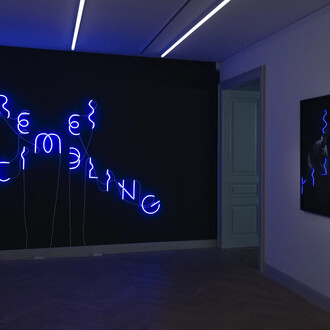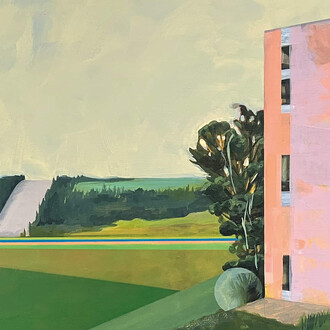Maximiliane Baumgartner’s artistic work emerges against the background of a broad examination of different forms of (counter-) public spheres and their historical contexts within an urban space. Her works are akin to creative action fields, often generated in collaboration with others. She is particularly interested in the use of painting as a social field of action.
With the title of her exhibition at Kirchgasse, Baumgartner refers to Gustav Gräser, an artist and important figure in a reform movement that developed and practiced alternative models of life in Southern Germany and Switzerland at the end of the 19th century. In turn, the “Rote Stadt” (Red City) refers to an eponymous play sculpture, which was built in 1972 near Munich’s Olympic Village.
Today, it can be regarded as a monument of a pedagogical practice that sought to accommodate artistic concepts and in which specific ideas about education and childhood, urban planning and public space, as well as architecture and art were evident. Baumgartner has a particular research interest in reformist play settings, architectures and the associated performative forms; these flow into “Der fahrende Raum” which, since 2015, has been operated as a space for art educational and artistic activity in an urban context.
The paintings presented in the exhibition provide Baumgartner with an additional field of reflection in which she refers to both executed actions and further research. Here, she questions the concepts of the public and the community, as well as her own various roles as an artist.












